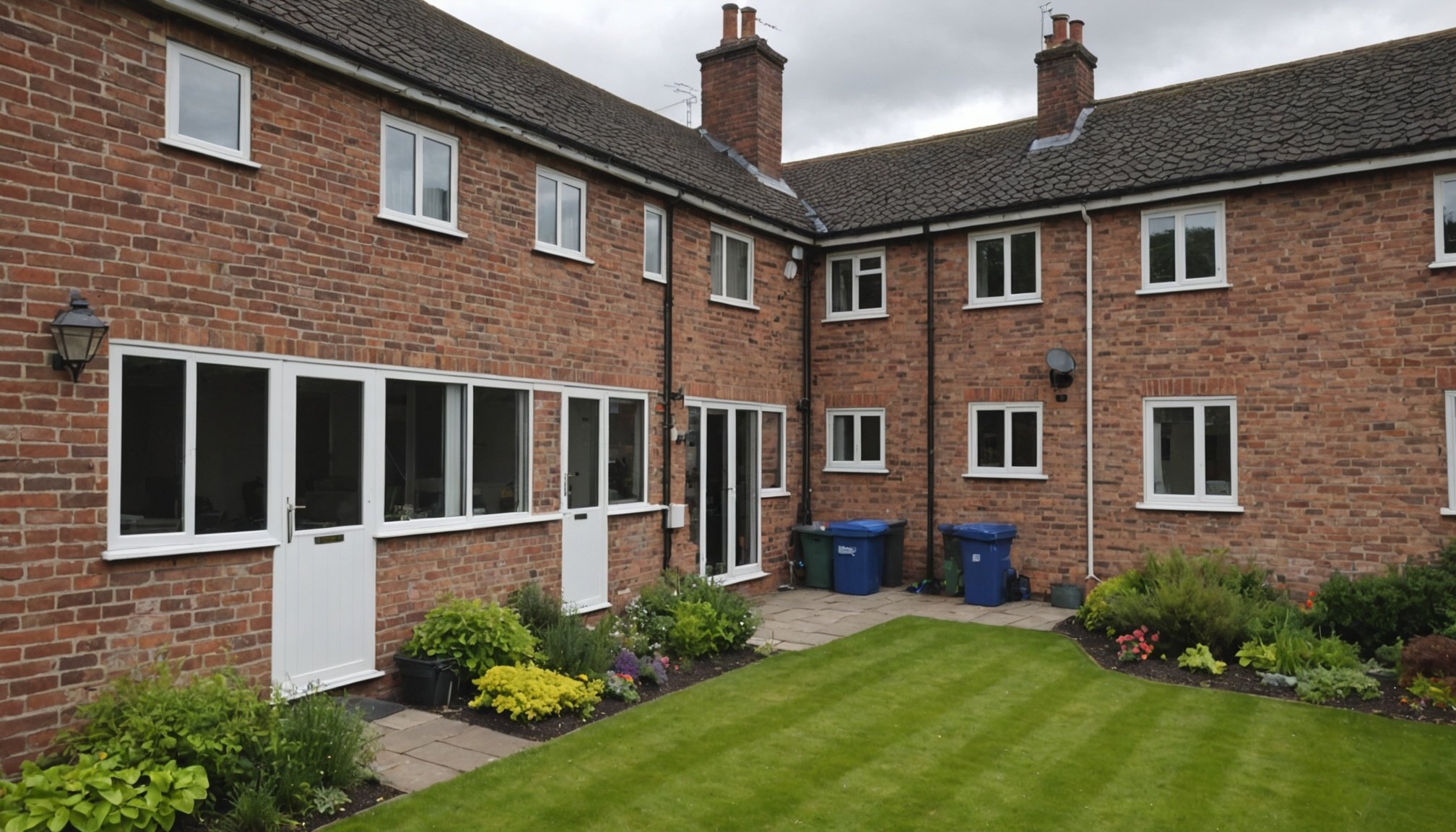Dampness in UK basements can lead to unhealthy living conditions and structural damage. Effective natural ventilation is key to combatting this issue. This guide presents proven strategies that not only improve air circulation but also enhance indoor air quality. Discover practical tips that transform your basement, ensuring fresh air flows freely and moisture is kept at bay. Embrace a healthier home environment while protecting your property from the perils of dampness.
Understanding Dampness in UK Basements
Dampness in basements is a common issue across the UK, primarily due to a combination of basement conditions and the notorious UK climate. The causes of dampness often include inadequate ventilation, poor drainage systems, and leaks in the building structure. These elements create an environment where moisture can easily accumulate, leading to persistent dampness.
En parallèle : Smart Strategies for Minimizing Household Waste in UK Urban Dwellings
The UK climate plays a significant role in exacerbating these issues. With frequent rain and high humidity levels, basements are particularly vulnerable to moisture build-up. The damp, cool conditions typical of the UK can lead to condensation, especially in poorly insulated or unventilated spaces. This makes it crucial to understand how the climate impacts basement conditions to effectively address dampness.
Identifying the sources of dampness is essential for finding effective solutions. By pinpointing whether the damp is due to structural issues, climate influence, or both, homeowners can implement targeted measures. This might include improving ventilation, repairing leaks, or installing a drainage system. Addressing these issues not only helps in maintaining a dry and healthy basement but also prevents potential damage to the property. Understanding these factors is key to managing and mitigating dampness effectively.
Avez-vous vu cela : Transforming Historic Spaces: A Guide to Designing Wheelchair-Accessible Bathrooms in UK Heritage Buildings
Natural Ventilation Techniques
Natural ventilation is a crucial strategy for managing dampness in UK basements. By harnessing natural airflow, homeowners can significantly improve airflow and reduce moisture accumulation. This not only helps in maintaining a healthy indoor environment but also reduces reliance on mechanical ventilation systems.
One effective method is cross-ventilation, which involves placing openings on opposite sides of a space to facilitate airflow. This technique allows fresh air to enter while stale, damp air is expelled, improving overall air quality. The stack effect is another passive strategy, where warm air rises and exits through higher openings, drawing cooler air in from lower levels. This natural movement of air can be particularly beneficial for basements, where stagnant air often leads to moisture build-up.
To enhance airflow improvement, homeowners can utilise windows and vents strategically. Installing vents at different heights can maximise the stack effect, while operable windows can be adjusted to optimise cross-ventilation. These passive strategies not only help manage dampness but also contribute to energy savings by reducing the need for artificial cooling and dehumidification. By understanding and implementing these techniques, homeowners can create a drier, healthier basement environment.
Case Studies of Successful Applications
Exploring real-life examples of successful implementations can provide valuable insights into managing basement dampness effectively. These case studies highlight innovative approaches and their outcomes.
Example 1: Residential Basement Renovation
In a suburban home, a residential basement renovation tackled persistent dampness through a combination of natural ventilation techniques and structural repairs. By installing cross-ventilation systems and addressing leaks, the homeowners achieved a significant reduction in moisture levels. The success of this project underscores the importance of identifying specific basement conditions and applying targeted solutions.
Example 2: Historic Property Ventilation
A historic property faced challenges in maintaining its structural integrity due to dampness. By implementing passive strategies like the stack effect and strategic vent placement, the property managers preserved the building's character while enhancing air quality. This case illustrates the adaptability of natural ventilation methods in diverse settings.
Example 3: Community Project in Damp-Prone Areas
A community initiative in a damp-prone neighbourhood focused on improving airflow in multiple basements. By coordinating efforts, residents installed operable windows and vents, leading to healthier living conditions across the area. This community project exemplifies how collective action and shared knowledge can address widespread dampness issues effectively.
Step-by-Step Guide to Implementing Ventilation Solutions
Implementing a natural ventilation system in your basement requires careful planning and execution. This implementation guide provides practical tips to ensure effectiveness.
Assessing Current Ventilation
Begin by evaluating existing ventilation systems. Identify any areas where airflow is restricted or where moisture accumulates. Use tools like hygrometers to measure humidity levels, and inspect for any structural issues that may impede airflow. Understanding these basement conditions is crucial for designing an effective system.
Designing a Natural Ventilation System
Designing a natural ventilation system involves strategic placement of vents and openings. Consider using cross-ventilation techniques by installing openings on opposite walls to promote airflow. The stack effect can be enhanced by placing vents at varying heights, allowing warm air to rise and exit while drawing in cooler air. Ensure that all openings are operable to adjust airflow as needed.
Maintenance and Monitoring
Regular maintenance is key to sustaining ventilation effectiveness. Check vents and windows for blockages or damage, and clean them periodically. Monitor humidity levels to ensure the system is functioning as intended. Adjust vent positions seasonally to optimise airflow and maintain a dry, healthy environment. By following these step-by-step guidelines, homeowners can effectively manage basement dampness.
Overcoming Barriers to Natural Ventilation
Implementing natural ventilation in UK basements often encounters several implementation barriers. Common challenges include structural limitations, such as small or absent windows, and environmental factors like high external humidity. These barriers can hinder effective airflow, making it difficult to manage moisture levels.
Structural challenges can be addressed by incorporating strategic solutions. Installing additional vents or enlarging existing openings can significantly enhance airflow. Using cross-ventilation techniques, where feasible, can also mitigate these structural constraints. For basements with limited external access, mechanical aids like fans may be necessary to supplement natural airflow.
Environmental limitations, such as high humidity, require tailored solutions. Dehumidifiers can be employed alongside natural ventilation to control moisture levels more effectively. Additionally, sealing any leaks or cracks in the basement structure can prevent external moisture ingress, complementing the ventilation efforts.
Community involvement plays a crucial role in overcoming these challenges. Raising awareness about the benefits of natural ventilation and sharing successful strategies can foster collective action. Community projects, similar to those in damp-prone areas, can facilitate resource sharing and provide support for residents facing similar issues. By working together, communities can effectively address the challenges of implementing natural ventilation in basements.












